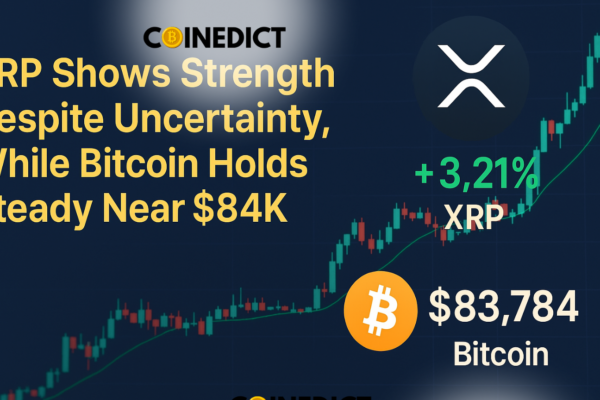
XRP Shows Strength Despite Uncertainty, While Bitcoin Holds Steady Near $84K
The crypto market has had an exciting few days, especially for XRP holders. On April 4, XRP jumped by over 3%, outshining the broader market, which only rose about 0.85%. What’s driving the buzz? A mix of ETF hopes, legal drama with the SEC, and overall market movements. ETF Excitement Fuels XRP’s Climb XRP’s rally comes as talk about an XRP Spot ETF gains momentum. There are currently 18 XRP ETF applications waiting for the SEC’s green light, and rumors are swirling that BlackRock, the asset management giant, could be jumping in soon. While nothing is confirmed, this possibility has sparked optimism about future institutional demand. Ripple vs SEC: Still No Clarity Meanwhile, investors are also keeping a close eye on the ongoing legal saga between Ripple and the SEC. Ripple’s CEO had earlier claimed that the SEC dropped its appeal over XRP’s sales—but the agency has yet to officially confirm it. This silence has left many in limbo, and since the announcement, XRP has dropped about 28% from its March peak of $2.59. Ripple has proposed a deal with the SEC that would reduce fines and remove restrictions on XRP’s sales to U.S. institutions. But so far, there’s been no official word from the SEC, leaving investors to guess what happens next. What’s Next for XRP? XRP is currently trading around $2.13. If ETF news or a legal resolution comes through, it could surge back toward its all-time high of $3.55. But delays or more regulatory uncertainty might push it down to around $1.79. For now, the token’s future hinges on both legal decisions and market momentum. Bitcoin Hovers Below $85K, Stays Resilient While XRP is catching headlines, Bitcoin has been quietly holding its ground. It climbed to nearly $84,600 after a strong U.S. Jobs Report, but trade war fears between the U.S. and China kept gains in check. Despite global stock markets dipping to 11-month lows, Bitcoin and other major cryptos showed surprising stability. However, U.S.-based Bitcoin ETFs haven’t had the best week. On April 4 alone, several funds like Grayscale, ARK, and Bitwise reported net outflows totaling nearly $65 million—excluding BlackRock’s fund, which has been the market’s backbone. Still, Bitcoin is up over 1.6% for the week, proving once again that crypto can remain resilient even when traditional markets are shaky. Final Thoughts XRP is at a tipping point—with major ETF developments and legal clarity on the horizon, it could go either way. Bitcoin, on the other hand, continues to act like a safe-haven asset in times of global tension. Investors are watching closely. With CPI data, trade policies, and legislative news all expected soon, the next few weeks could be key for the entire crypto market.

















